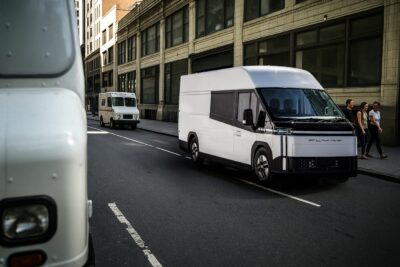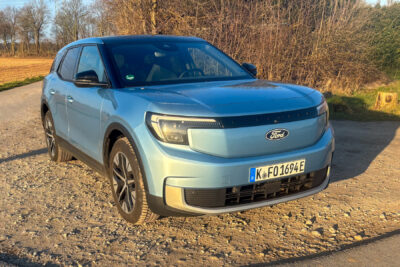German Aerospace Center presents EV concept
With the Interurban Vehicle (IUV), the German Aerospace Centre (DLR) has developed a concept for vehicles in the middle and upper classes. The IUV combines fuel cell, battery and new approaches to energy management.
The concept car is five metres long, two metres wide and offers space for five people. As an ‘Interurban Vehicle’, the five-metre car is not optimised for inner-city traffic, but for the journey between cities – and even longer distances. According to the announcement, the IUV is designed for “emission-free and comfortable driving over long distances of up to 1,000 kilometres”.
In terms of the drive concept, DLR has opted for a combination of battery and fuel cell, which the communication calls a “fuel cell plug-in hybrid”. Per definition, this is not quite correct, as both the battery and the fuel cell part of the drive use the same electric motor and it is not separated into two complete drive systems, each with its own energy storage and motor, as is the case with a hybrid. However, the principle becomes clear with this designation: similar to the Mercedes GLC F-Cell, for example, the battery can also be charged by cable, which is not possible with the Hyundai Nexo and Toyota Mirai.
However, the battery of the IUV is larger than that of conventional internal combustion plug-in hybrids: It has an energy content of 48 kWh. The battery is installed in the rear of the vehicle. Hydrogen tanks with a capacity of 7.5 kilograms are installed in the underbody, where the battery is usually located in BEVs. The fuel cell in the front of the car has an output of 45 kW, which should be sufficient for energy needs at cruising speed. The electric motors produce a total of 136 kW – the difference must therefore be buffered from the battery.
To achieve the 1,000 kilometre range, the energy management was also designed to be as efficient as possible. For this purpose, a metal hydride storage system was developed that uses part of the pressure difference between the hydrogen tank at 700 bar and the fuel cell at five bar to generate additional cold for the vehicle’s air conditioning and to support the conventional refrigeration machine – this energy then does not have to be taken from the battery.
In addition, there are more classic efficiency measures such as lightweight construction – the IUV weighs less than 1,600 kilograms empty. “The IUV body structure weighs just 250 kilograms, about a quarter below what is otherwise common in this vehicle segment,” says project manager Sebastian Vohrer from the DLR Institute of Vehicle Concepts in Stuttgart. This is made possible by the use of fibre-reinforced plastics, but aluminium and sandwich materials are also used in appropriate places. But the design has also been adapted to this: “The structures fulfil several functions here. The floor structure, for instance, is used to conduct electricity and transmit data, in addition to carrying all the vehicle superstructures,” says Vohrer. “This eliminates the need for additional cable lines and further reduces the overall weight.”
The vehicle shown in the photos is a rollable demonstrator – in other words, an interpretation of how the DLR team could imagine a possible body on the technology platform. Other body concepts are of course possible. Nevertheless, the demonstrator serves another purpose: “The demonstrator gives a first impression of how the vehicle may look in practice,” says Vohrer. “It also facilitated the development of key components and technologies and enabled their measurement and investigation on the test stand. It reveals where there is room for improvement, and what can be achieved going forward with partners from industry and research.”





0 Comments